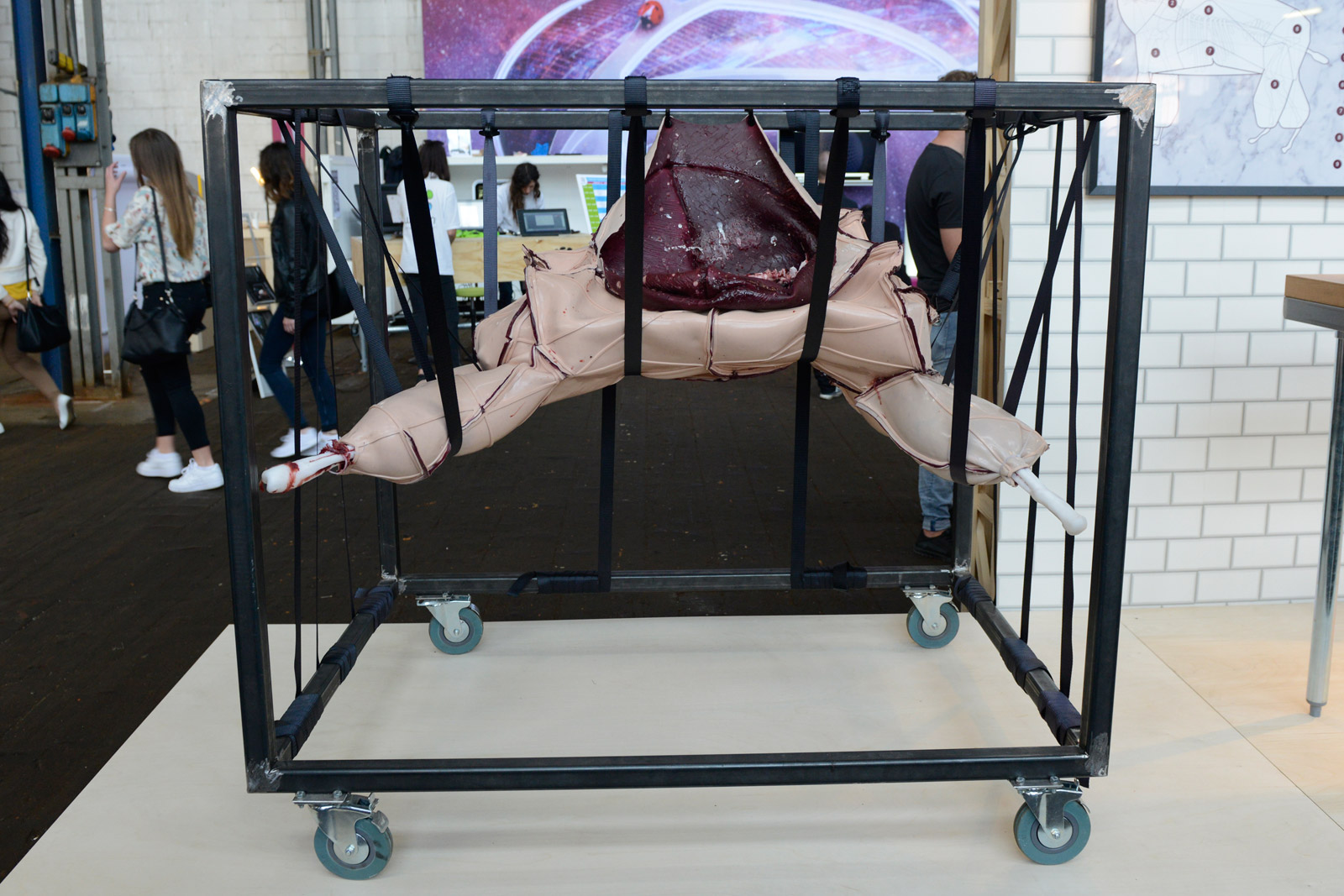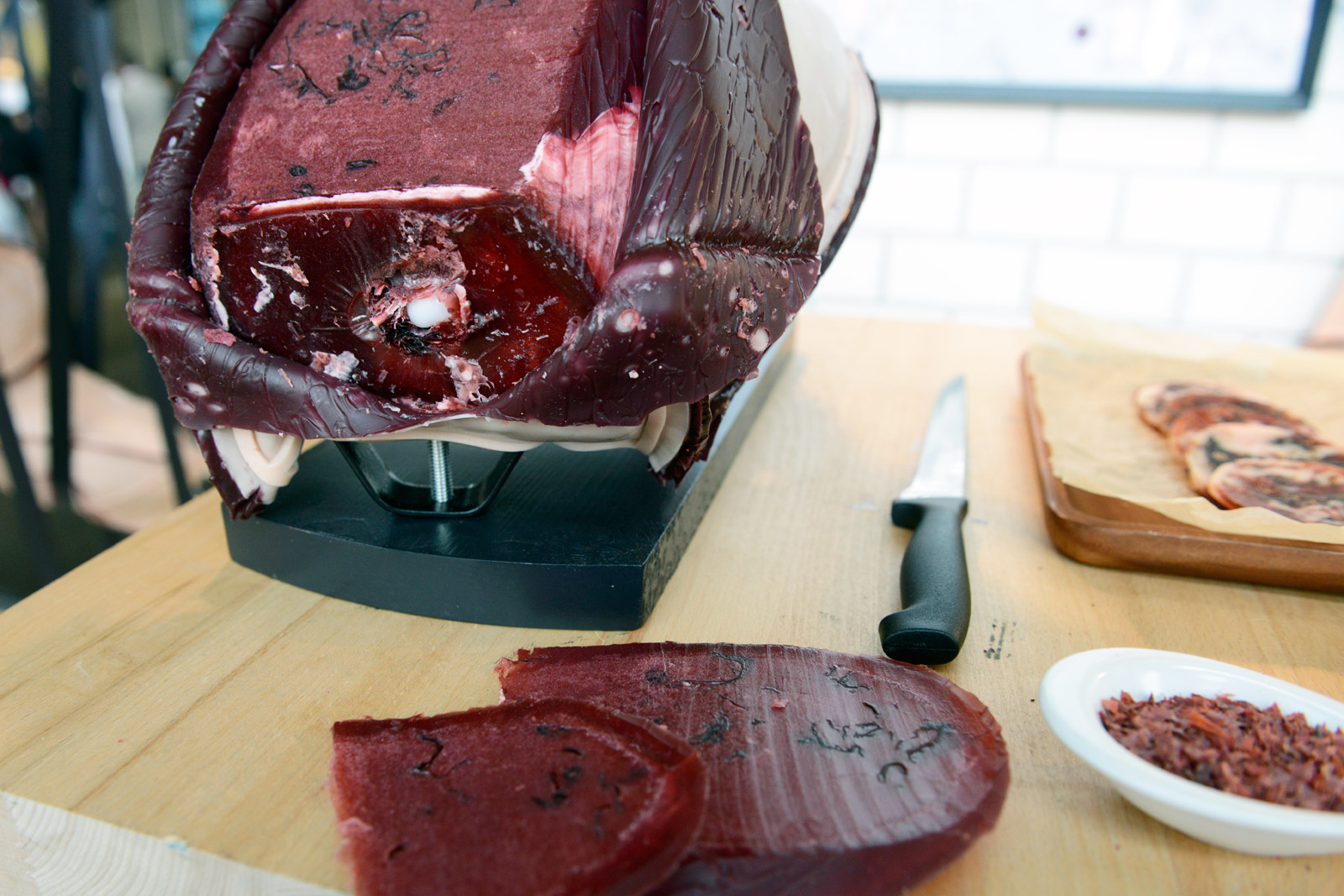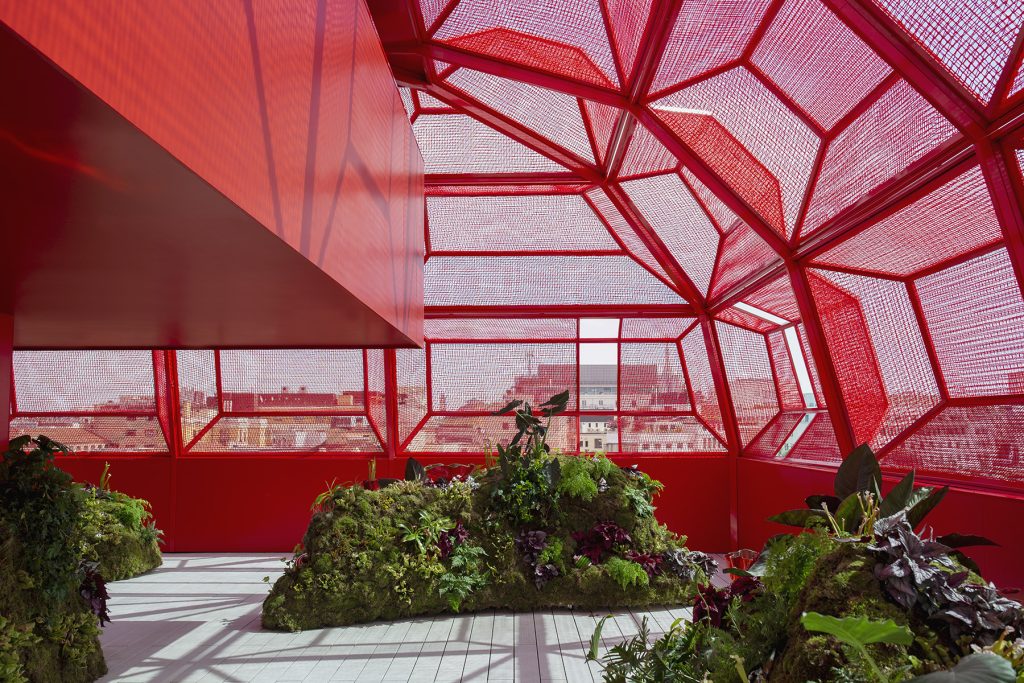Hanan Alkouh’s Sea-Meat
Documenting the culture of meat consumption with Dulse seaweed food sculptures

Designer Hanan Alkouh does not believe in the sustainability of meat production and she does not stand behind our continued wasteful consumption. She recognizes that with a push toward minimizing or removing it all, much of the centuries of culture may get lost. At a strange but enthralling intersection of design, art and food, Alkouh’s Sea-Meat (which we first spied at this year’s Milan Design Week) poses the question, “How do we replicate the culture of meat keeping and meat eating in a post-meat world?” Alkouh’s answer is sculptural and her material is a food itself: Dulse, a popular form of edible red seaweed (that arguably tastes like bacon).

Alkouh’s installation in Milan tackled the industry behind pig meat. Utilizing sculptures composed of the Dulse, she replicated butcher shop visuals and even hung faux carcasses. However, it’s all countered by the narrative of seaweed growth and development. She unites it all with understood theatrics. “I was conducting research on the future of smell, and found a plant, the carrion flower, that emitted the odor of rotten flesh and from there on was fascinated with this contradictory illusion,” Alkouh explains to CH about the idea’s inception. “I remember stumbling upon an article I read last year about this seaweed that tasted like bacon, and I wanted to explore the potential of the Dulse further; to integrate it into the existing meat system to communicate a narrative about how unsustainable our current consumption trends are, and what that means for the future of the skills and industries around it if we suddenly had to stop eating meat.”

“There is already a system in place created for the way we utilize butchery and consume meat, and this project exploits that language with a more moral and environmentally sustainable compass,” she continues. “The objective is to make a point that those skills will be jeopardized in a post-meat world, and we are already starting to see that these skills are diminishing with the industrialization of meat production.” Within the exhibition itself, Alkouh showcased a series of seaweed carcasses designed to represent different parts of a pig’s body—though a bit abstracted at times. An elastic silicon cast was used for the skin.
I believe that in order for the Sea-Meat to be accepted as a viable sustainable alternative, it must not only behave and taste like meat, but also look like meat
“The technical engineering of the carcass is carefully considered,” she notes. “The Sea-Meat is first split down the middle along the center of the spine that is designed and divided in two parts, and then is skinned and cut into its various smaller parts. Here mass, scale and weight play an important role when choreographing the disassembly.” The silicon preserves the seaweed—which ultimately has a shelf life of a year. From a visual perspective, however, the seaweed’s texture does closely resemble that of the grain within various meat cuts. Alkouh experimented with textures and consistencies because this is more than just an art and design piece. It’s a potential solution. “I believe that in order for the Sea-Meat to be accepted as a viable sustainable alternative, it must not only behave and taste like meat, but also look like meat,” she adds.

As for what’s next, Alkouh plans to increase the edibility factor of her sculptures. “I’m working on collaborating with chefs and food specialists to try and make this intent edible, but for now more of the spectacle of the ‘butcher ballet’ can be seen at the Central Saint Martins Graduate Degree show scheduled to take place at the end of June.” From a conceptual and sculptural stand-point, it will be worth seeing in London—and from an edible standpoint, we shall see.
Images by Evan Orensten











